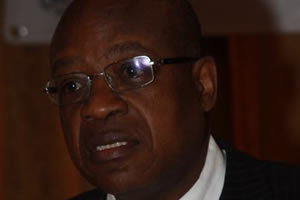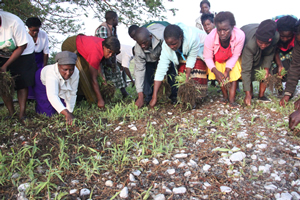UNDP delays Global Fund disbursement

programmes after the United Nations Development Programme failed to release the money for more than two years.
Part of the money is supposed to buy sophisticated X-Ray machines with the remainder going towards payment of servicing laboratory machines.
If the money is not used in the next six months, the option will expire.
Those using the public health institutions are relying on obsolete X-Ray machines, forcing patients to endure long winding queues to have their X-Rays taken.
This money was granted to Zimbabwe by the Global Fund to Fight HIV and Aids, Tuberculosis under Round 8 of funding.
But the UNDP has been delaying disbursing the funds, thereby compromising service delivery in Government institutions.
Investigations by The Herald showed that sometime in 2009, Government submitted a proposal to the UNDP on the need to procure seven analogue X-Ray machines for central hospitals and 11 for district hospitals, seven heavy duty film processors and 11 tabletop film processors – all worth about US$2,76 million.
UNDP then flighted a tender both in local and international media inviting interested suppliers for the needed equipment.
The deadline for submission of the applications for the tender was February 7, 2010.
No delivery came through and in line with new technology in April this year the Government changed its specifications for the required equipment from analogue X-Ray to digital radiography X-Ray machines.
Based on these specifications now only four units can be procured from the available budget of US$2,76 million.
Called upon to explain the delay the UNDP said procurement of digital X-Ray machines needed “careful preparations”.
“The subsequent decision to shift to digital equipment called for additional technical facility assessments, cost revisions, adjustments to the ICT and infrastructure requirements, as well as a review and a re-launching of the bidding process,” says UNDP in an email response.
It also said in order to address the ancillary equipment needs an assessment of the existing X-Ray equipment needs to be done to come up with requirements for setting up the digital system.
“The specifications were provided this week for a total of thirteen (13) digital X-Ray machines and the process is now being expedited,” said UNDP.
However, those in the know claim that if normal procedures were to be followed, procurement of the equipment should have been done within a period of four weeks.
Officials from the Ministry of Health and Child Welfare took a swipe at UNDP for failing to release a further US$500 000 for servicing laboratory machines.
It is understood that of the 70 laboratory machines in the country, 30 had broken down but have since been serviced.
Government informed UNDP in December last year to release money for the payment of the service but nothing has materialised.
The delay by UNDP has raised speculation to those in Government with others alleging that the UN agency is not working with implementing partners.
It is alleged that the UN agency at one point procured X-Ray machines from Ukraine without reaching an agreement with Government.
The machines were subsequently rejected by the state.
The Principal Director for Curative Services in the Ministry of Health and Child Welfare Mr Christopher Tapfumaneyi described UNDP’s behaviour as retrogressive.
“We are not happy in the way the UNDP is handling funds for our projects. They are creating unnecessary delays because there is no reason as to why certain things are not done as and when they are required.
“We do not know why they do not want to release the funds,” Mr Tapfumaneyi said.
He said when Global Funds were being managed by Crown Agency – an independent organisation and the National Aids Council (NAC) things were flowing smoothly.
UNDP became the Principal Recipient (PR) for the country following a Global Decision to take away that role from the National Aids Council.
It was stated that the move would create more transparency and accountability as well as remove hurdles to achieving set targets in fight against the three killer diseases.







Comments